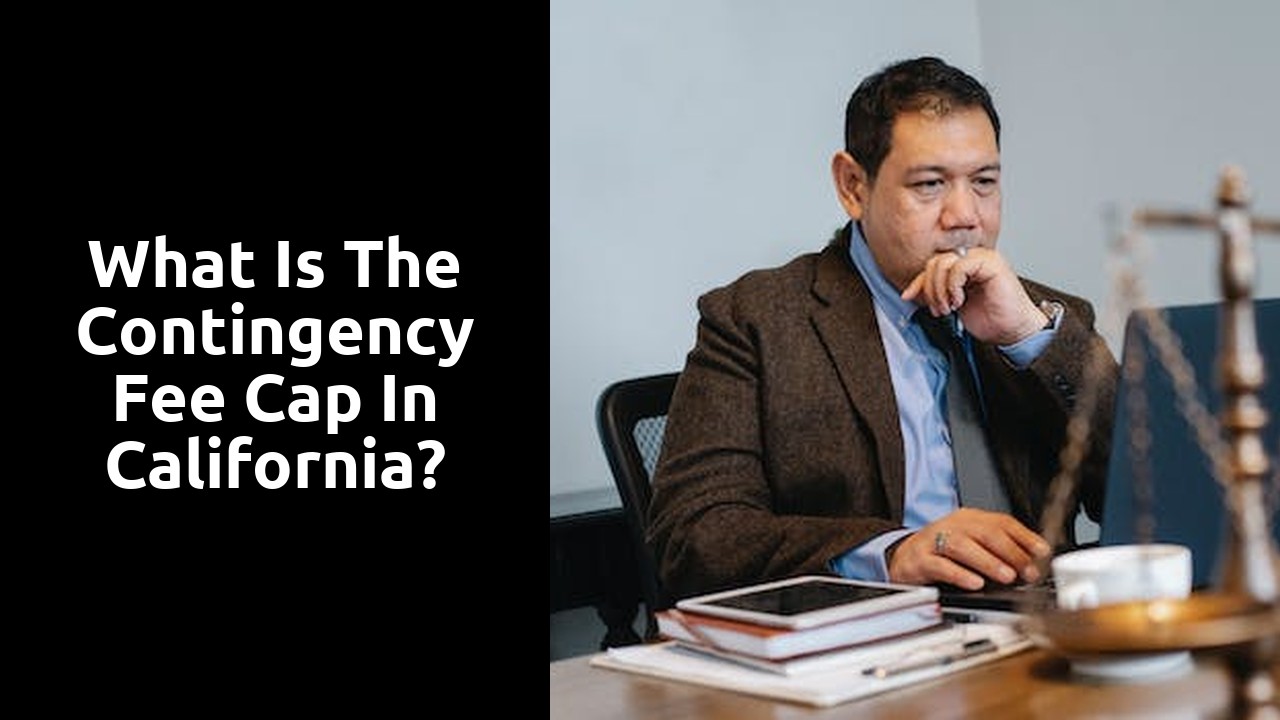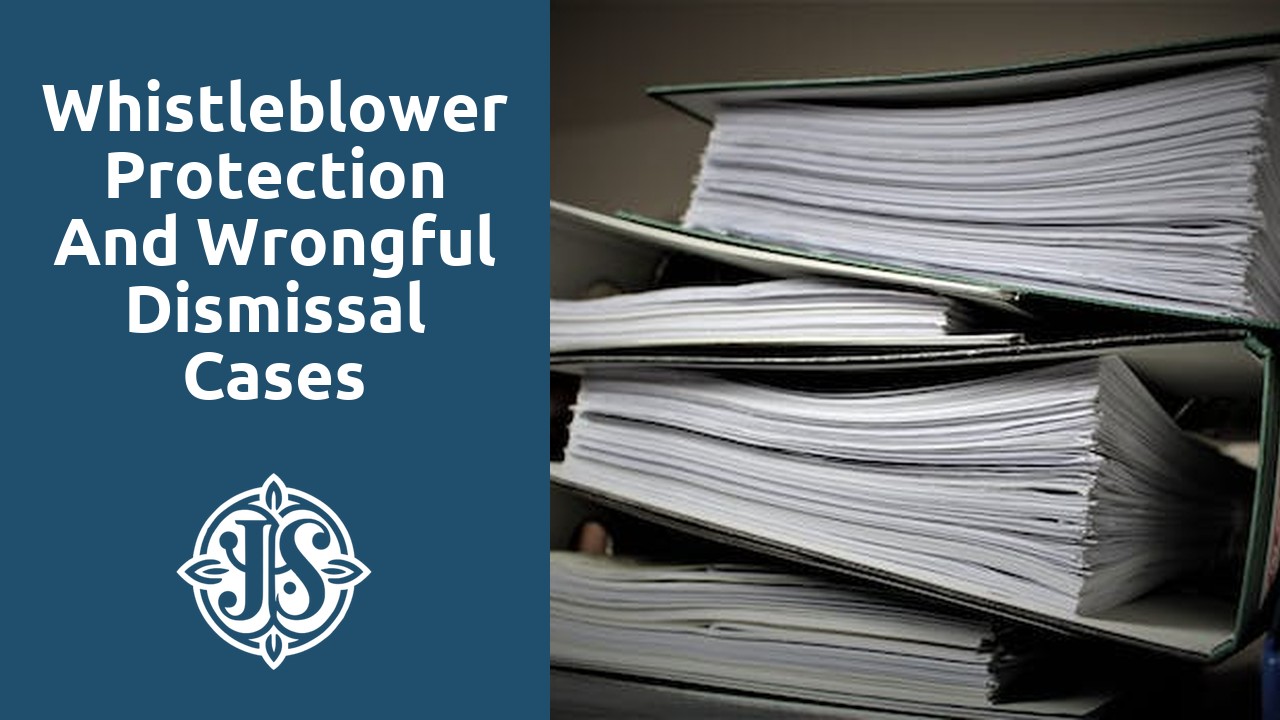Contents
- 1 Unveiling California’s Limit on Contingency Fees
- 2 Understanding the California Contingency Fee Cap
- 3 Exploring the Contingency Fee Cap in California
- 4 Delving into California’s Regulations on Contingency Fees
- 5 The Lowdown on Contingency Fee Limits in California
- 6 Navigating California’s Contingency Fee Cap
- 7 FAQS
- 7.1 What is a contingency fee?
- 7.2 Is there a contingency fee cap in California?
- 7.3 What types of cases are subject to the contingency fee cap in California?
- 7.4 What is the current contingency fee cap in California?
- 7.5 Are there any exceptions to the contingency fee cap in California?
- 7.6 Are contingency fees the only form of payment for attorneys in California?
- 7.7 How does the contingency fee cap benefit clients in California?
- 7.8 Can clients negotiate the contingency fee percentage with their attorney?
- 7.9 Are there any additional costs or expenses that clients should be aware of in addition to the contingency fee?
- 7.10 How can clients verify if their attorney is complying with the contingency fee cap in California?
Unveiling California’s Limit on Contingency Fees
California has implemented a cap on contingency fees, aiming to provide protection and fairness for all parties involved in legal cases. This limit sets a maximum percentage of the recovery amount that an attorney can receive as their fee. The purpose of this restriction is to ensure that clients are not subjected to exorbitant fees and to prevent attorneys from taking advantage of their clients’ situations.
Under the current regulations, the contingency fee cap in California is set at 40% for cases that settle before filing a lawsuit and 45% for cases that proceed to litigation. This means that attorneys cannot charge their clients more than these specified percentages of the recovery amount they secure for them. This cap applies to a range of cases, including personal injury, medical malpractice, employment law, and other civil lawsuits. It is important for both clients and attorneys to be aware of these limits to ensure that their legal rights are protected and that any fee agreements adhere to these regulations.
Understanding the California Contingency Fee Cap
Understanding the California Contingency Fee Cap
The California contingency fee cap refers to the maximum percentage that attorneys can charge their clients for legal services rendered on a contingency basis. In other words, attorneys are only entitled to receive a specific percentage of the total amount recovered if they successfully win a case for their client. This cap is put in place to protect clients from excessive fees and ensure that attorneys are not taking advantage of their clients’ situations.
The specific contingency fee cap in California varies depending on the type of case and the amount recovered. For personal injury cases, the maximum contingency fee percentage is typically around 33%. However, in certain situations, such as medical malpractice cases, the fee cap can be lowered to 40% of the first $50,000 recovered, 33.33% of the next $50,000, and 25% of any amount over $600,000. It’s important for clients to understand these fee caps so that they can make an informed decision when hiring an attorney for their case. By familiarizing themselves with the fee structure, clients can ensure that they are being treated fairly and not being charged excessive fees for legal representation.
Exploring the Contingency Fee Cap in California
Contingency fees play an important role in the legal system, providing access to justice for individuals who may not be able to afford upfront legal costs. However, it’s crucial to understand the contingency fee cap in California to ensure fair and reasonable compensation for legal services. The contingency fee cap refers to the maximum percentage that an attorney can charge as a fee based on the final settlement or verdict in a case.
In California, the contingency fee cap varies depending on the type of case. For personal injury and wrongful death cases, the fee cap is typically set at 33.33% of the total recovery. This means that if a plaintiff receives a settlement of $100,000, the attorney’s fee cannot exceed $33,333. Additionally, it’s important to note that the contingency fee cap may be subject to adjustment based on certain factors, such as the complexity of the case or the duration of the attorney-client relationship. Understanding these regulations can help ensure that both clients and attorneys are aware of their rights and obligations when it comes to contingency fees in California.
Delving into California’s Regulations on Contingency Fees
The regulations on contingency fees in California are in place to ensure fairness and protect the interests of clients and attorneys alike. Under these regulations, contingency fees are limited to a maximum of 40% for personal injury cases and 33.3% for cases involving medical malpractice. Additionally, these caps may vary depending on the stage at which the case is resolved.
It is important to note that these limits only apply to cases that are resolved through a settlement or judgment. In cases where a settlement or judgment is not reached, the contingency fee cap does not apply. Attorneys are allowed to negotiate higher fees in these situations, but they must do so in a manner that is fair and reasonable. The regulations also require attorneys to provide clients with a written agreement that clearly outlines the terms of the contingency fee arrangement, including the percentage that will be charged and any expenses that will be deducted from the final recovery. Overall, these regulations aim to strike a balance between protecting clients’ interests and ensuring that attorneys are fairly compensated for their work.
The Lowdown on Contingency Fee Limits in California
The state of California has implemented a contingency fee cap to regulate the amount attorneys can charge their clients in certain types of cases. This limitation on contingency fees is aimed at protecting clients from excessive fees and ensuring fairness in legal proceedings. The contingency fee cap in California states that attorneys cannot charge more than 40% of the total recovery for cases involving personal injury, medical malpractice, or wrongful death. This means that if a client receives a settlement or judgment of $100,000, the attorney’s fee cannot exceed $40,000. It is important to note that this cap does not apply to other types of cases, such as employment law or contract disputes.
Navigating California’s contingency fee cap can be a complex task for both attorneys and clients alike. California law sets a limit on the amount that attorneys can charge their clients for contingency fees in certain types of cases. This cap is intended to ensure that clients are not charged excessive fees and that attorneys are not taking unfair advantage of their clients’ situations.
Under the California Business and Professions Code, attorneys are prohibited from charging contingency fees in excess of certain percentages depending on the type of case. For example, personal injury cases have a cap of 33.33% of the total recovery, while medical malpractice cases have a cap of 40%. It is important for attorneys to carefully review and understand these limits to ensure that they are in compliance with the law and not risking potential disciplinary action. Additionally, clients should be aware of these caps and discuss them with their attorneys to ensure that they are comfortable with the fee arrangement before proceeding with the case.
FAQS
What is a contingency fee?
A contingency fee is a type of payment arrangement commonly used in legal cases where the attorney’s payment is contingent upon the successful outcome of the case. Instead of charging an upfront fee or an hourly rate, the attorney receives a percentage of the client’s recovery if they win the case.
Is there a contingency fee cap in California?
Yes, California has a contingency fee cap that limits the amount attorneys can charge their clients in certain types of cases.
What types of cases are subject to the contingency fee cap in California?
The contingency fee cap applies to cases involving personal injury, medical malpractice, wrongful death, and other similar types of civil cases.
What is the current contingency fee cap in California?
As of [insert date], the contingency fee cap in California is set at 40% of the first $50,000 recovered, 33.33% of the next $50,000, and 25% of any amount over $100,000.
Are there any exceptions to the contingency fee cap in California?
Yes, there are certain exceptions to the contingency fee cap. For example, if the attorney can prove that the case involves extraordinary risks or difficulties, they may be able to negotiate a higher fee with the client.
Are contingency fees the only form of payment for attorneys in California?
No, attorneys in California have the option to charge clients using alternative fee arrangements, such as flat fees or hourly rates. Contingency fees are just one of the payment options available.
How does the contingency fee cap benefit clients in California?
The contingency fee cap helps protect clients by ensuring that attorneys cannot charge excessive fees for their services. It provides a framework for fair and reasonable compensation for both the attorney and the client.
Can clients negotiate the contingency fee percentage with their attorney?
Yes, clients can negotiate the contingency fee percentage with their attorney. However, the negotiated fee cannot exceed the maximum percentage allowed by the contingency fee cap.
Are there any additional costs or expenses that clients should be aware of in addition to the contingency fee?
Yes, in addition to the contingency fee, clients may be responsible for covering other litigation expenses, such as court filing fees, expert witness fees, and costs associated with obtaining evidence. It is important for clients to discuss these potential expenses with their attorney before entering into a contingency fee agreement.
How can clients verify if their attorney is complying with the contingency fee cap in California?
Clients can review their fee agreement and consult with other legal professionals to ensure that their attorney is adhering to the contingency fee cap. They can also seek guidance from the State Bar of California or consult legal resources for further information on contingency fee regulations.




